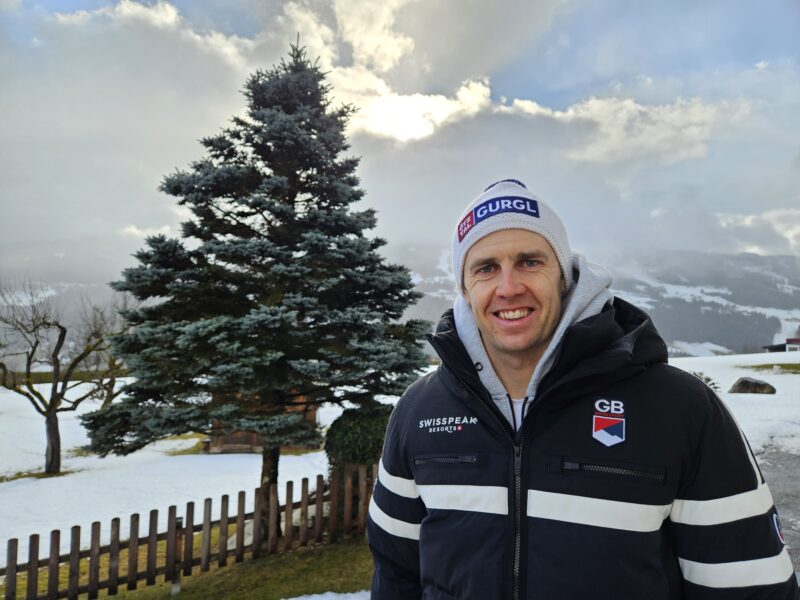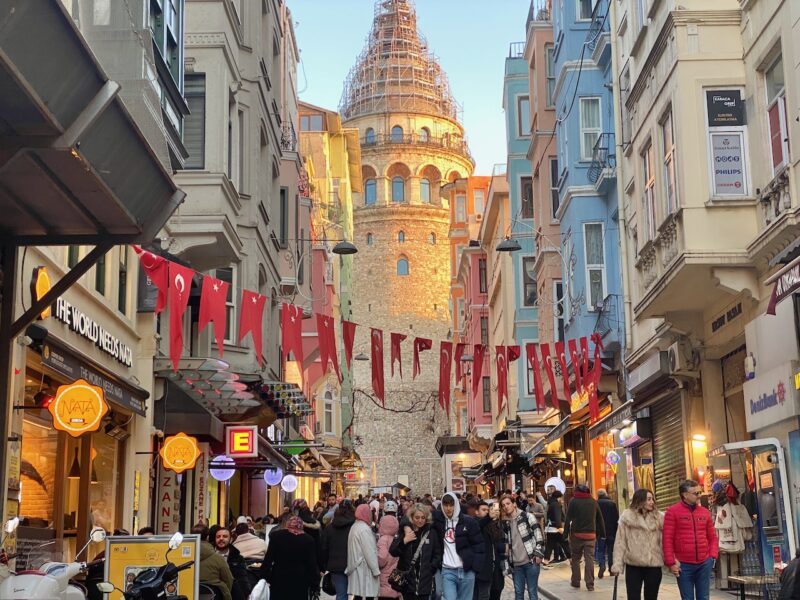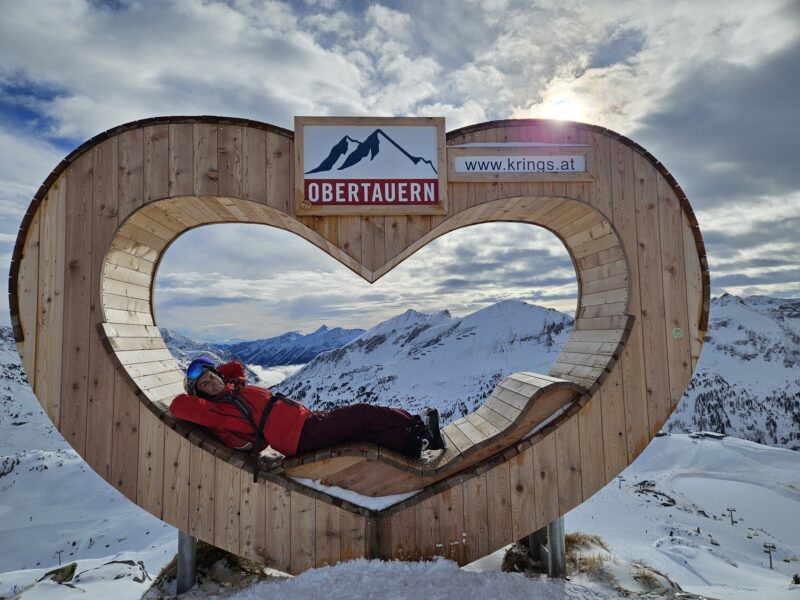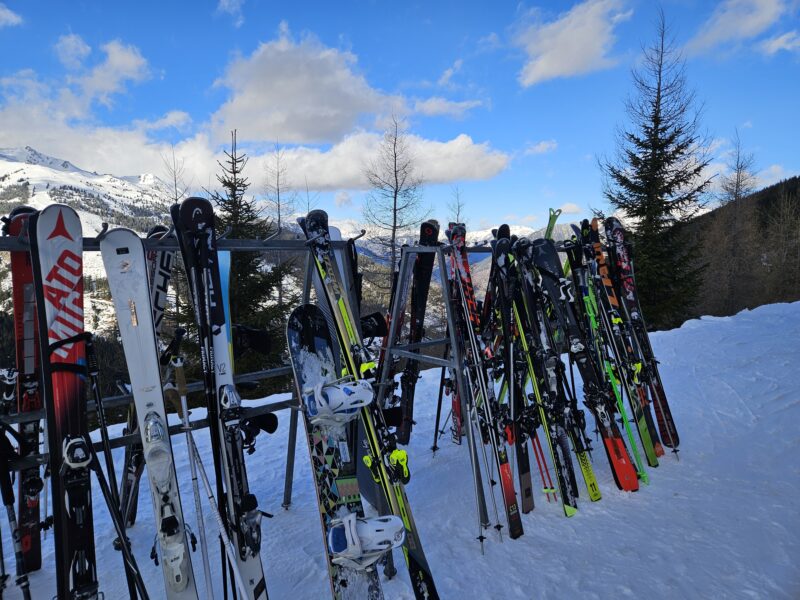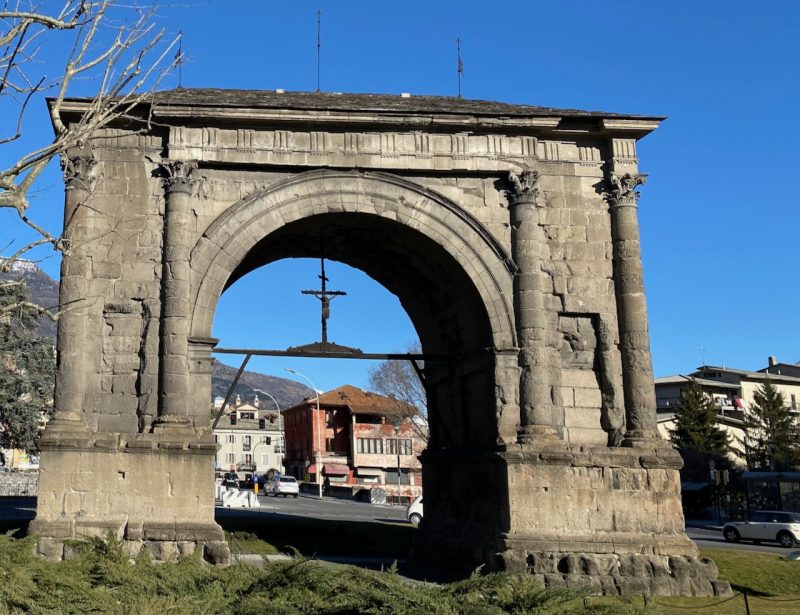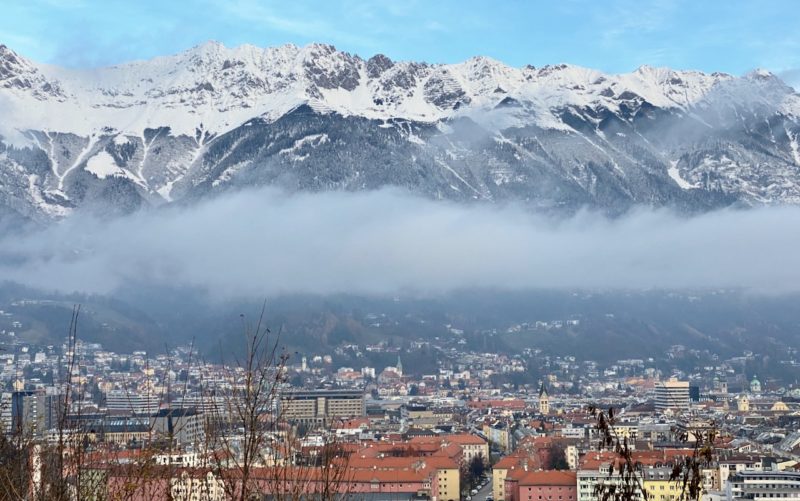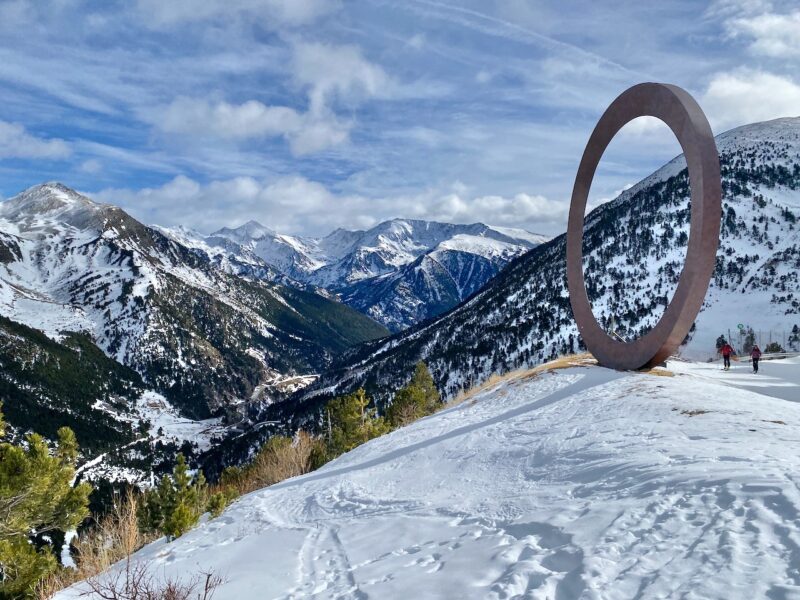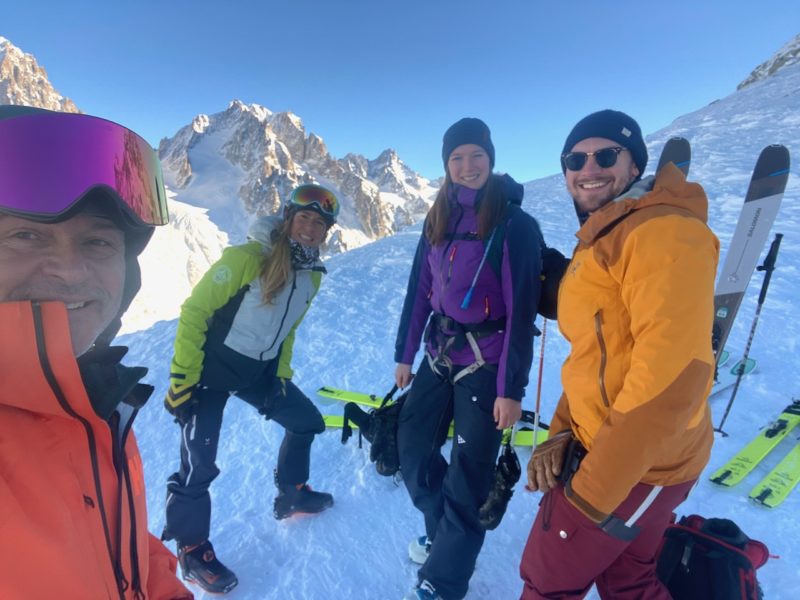Climate Change Threatens Ski Resorts
18th April 2023 | Leonora Ellis
Last modified on June 4th, 2023
A new intergovernmental report on the climate crisis paints a bleak future. Journalism student, Leonora Ellis, looks at the possible implications for the ski industry.
Last month the Intergovernmental Panel on Climate Change (IPCC) released the final part of a colossal 6-part report on the climate crisis.
In short, the message was this: if humans don’t act now then it will be too late.
We are at a tipping point, and for some things that will be a point of no return.
It has taken leading climate scientists 8-years to compile the report, depicting the destruction of the earth as a result of our damage to the climate.
This is a final warning to governments across the globe before temperatures rise to 1.5C above pre-industrial levels.
Gus Mackintosh is working his second ski season at Les Menuires in Les3Vallees in France, and he tells me the resort is struggling.
It was warm in the middle of the season, as well as wet.
Even at 2,000 metres up, Les Menuires has seen many days this season when it has rained instead of snowed, and the snow that is there was melting fast at times.
Some of the lower resorts have been struggling.
On his second ski season, Gus believes in a matter of years there will be less snow.
“Seasons will have to run shorter than they have done, this will have a big knock-on effect with ski resorts, especially low altitude resorts.”
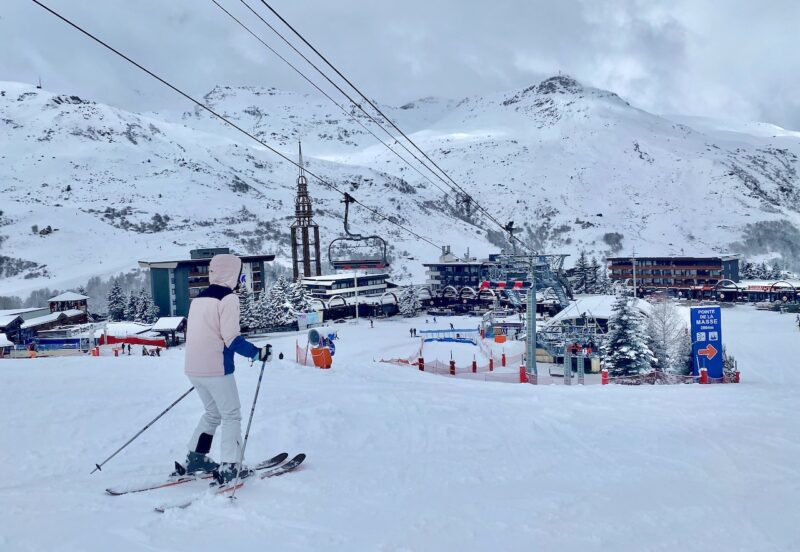
Les Menuires, France. Image © PlanetSKI
The world is warming because we are pumping greenhouse gases into the atmosphere.
Snow cover is consequently generally declining around the world in the mountain regions.
Resorts are not just facing the obvious reduced winter snow cover and extreme precipitation, there is also the potential for warming temperatures to impact on the stability of the snowpack with implications for avalanches.
Rachael Carver, a GIS Data Analyst, has seen resorts at lower altitudes closing due to poor snow reliability, some even closing permanently.
“This is likely to continue in the long-term. Unless ski resorts adapt to climate change,” which in turn will disrupt ski tourism and how these industries will exist in the future.
Resorts are relying on astute media awareness to maintain their popularity; headlines about climate change are inevitably difficult to manage.
Stephanie Dijkman, Director of Anzère Tourism in Switzerland, says the media go crazy as soon as there is poor snow at the beginning of the season: “The most challenging obstacle is the mindset of the media and our guests.”
Anzère is at 1,500 metres, Stephanie Dijkman is reassured by studies that for the next 30 years, the resort will have enough snow to operate, “also modern techniques (artificial snow), make sure we have a good base-layer.”
Climate change is causing considerably shorter seasons, reducing the number of snow days and therefore snow reliability.
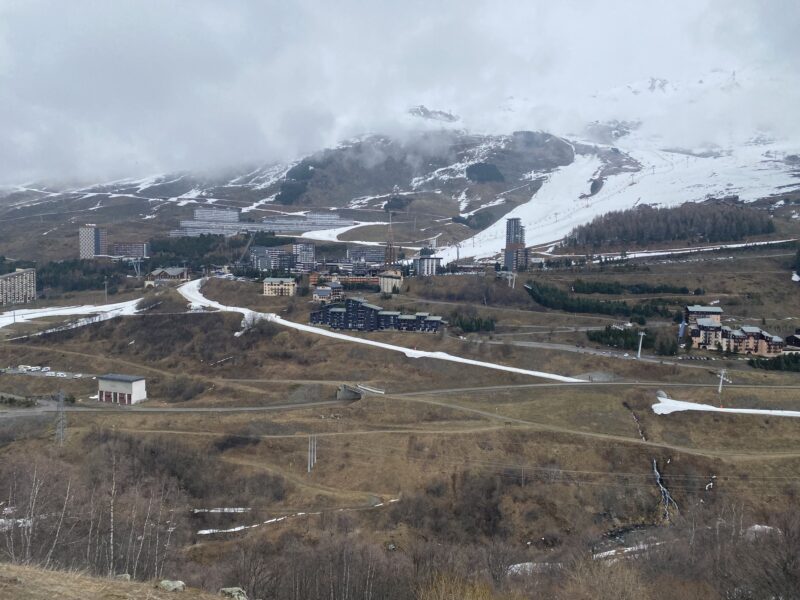
Les Menuires, France. April 2023 Image © PlanetSKI
“Warmer temperatures are making it more challenging to generate artificial snow. This is because artificial snow machines require temperatures of 1 degree or less to produce snow,” said GIS Data Analyst, Rachael Carver.
In the future, advances in technology may make it possible to produce artificial snow at warmer temperatures, however the technology is not currently available,” she added.
Gus Mackintosh can see this in Les Menuires.
“This season they are struggling to even keep these going as they run off frozen lakes that have water from earlier in the year, these lakes are running out of water fast.”
It is not only Europe that is tackling the rapid disappearance in snow.
Jamie Berti is working a ski season in Whistler Blackcomb in Canada where he says there’s been the worst snowfall for a while.
The practical impacts on resorts have unexpectedly caused a short-term increase in tourism, “this phenomenon is known as last-chance tourism”, said Rachael Carver.
This is the sad reality whereby tourists visit a certain environment before it disappears. However, “this is not a long-term sustainable increase in tourism.”
Adapting to the changes that are already happening, the climate change we have already caused, will be key to keeping resorts going.
Professor Richard Betts MBE, who worked on the UK’s national climate change risk assessment, told me that it’s very clear from the data that snow cover is decreasing and there is a very clear decline in glaciers.
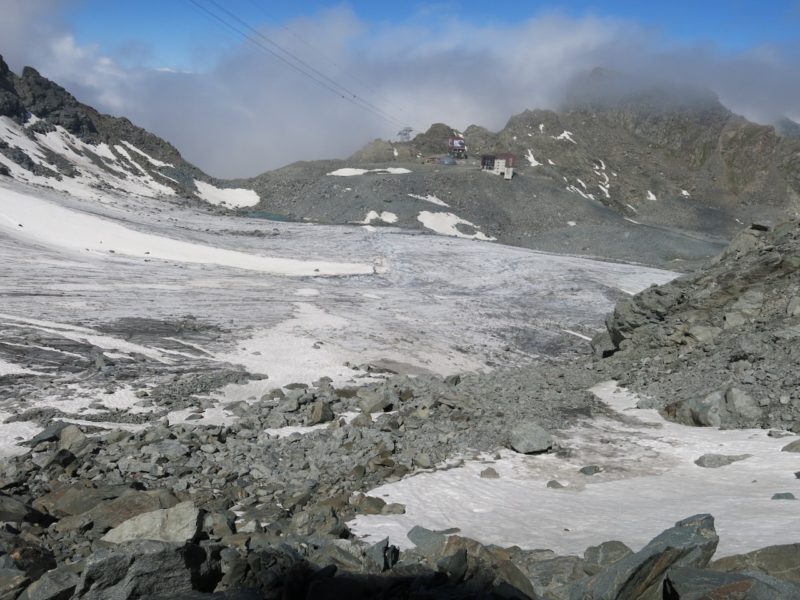
Mont Fort glacier, Switzerland. Image © PlanetSKI
“You don’t even need data. You can actually see it in personal experience. People in recent years are actually experiencing the loss of, and seeing the loss in, glaciers.”
Betts is also worried about the biodiversity in these areas: “the kind of species that you get up mountainsides, for example, broadly speaking, we’re finding them shifting up slope because they require warmer temperatures, they can now be found higher and higher in the mountains because the temperature is hot higher up there.”
“One of the starkest examples of climate change which I use in talks is before and after photographs of glaciers in mountain regions.
“There are many photographs in the Alps showing glaciers which are very much shrunken or disappeared compared to 100 years ago or 50 years ago.
“For me, it’s a really evocative image of what we’re doing to the climate.”
So, there is this kind of aesthetic implication as well as practical; seeing glaciers on the mountainside is an important part of the view.
Carver says that resorts might choose to build viewing platforms to demonstrate changes in the environment over time.
There will also be a substantial economic impact on these parts of Europe where ski resorts exist and typically create large revenues.
“Most people do not see that the skiing industry is massive and that lots and lots of families rely on the skiing industry for their income,” said Dijkman.
“We are all working on adapting our system, it’s a global responsibility, but we’re the ones directly implicated as, if we do not have any snow anymore our economic model will collapse.”
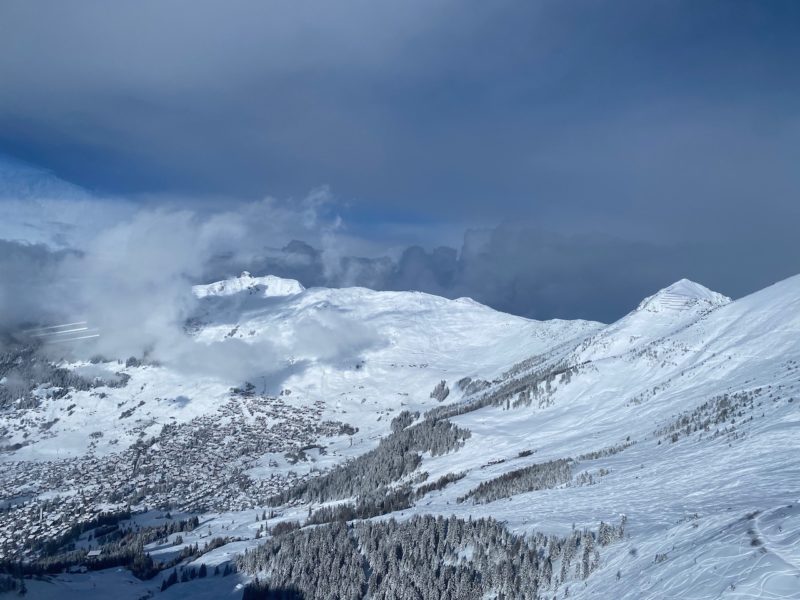
Verbier, Switzerland. Image © PlanetSKI
If resorts fail to adapt their product to climate change, short or long term, and attract tourists once snow reliability is so poor, resorts will be closing down.
There are suitable activities that use the same infrastructure as skiing, and if marketed well could maintain the flow of tourists both in the summer and winter seasons across European ski resorts: Dry ski slopes, roller skiing, grass skiing, snow domes.
“Dry ski slopes offer tourists the opportunity to ski in mountainous environments without snow, providing there is a water supply to lubricate the slope,” said Rachael Carver.
Grass skiing is an activity that uses existing infrastructure at ski resorts and provides an all-year-round alternative to skiing.
“Existing ski resorts have the infrastructure in place to transport tourists and their ski equipment up pistes, so adaption can focus on constructing dry ski slopes on existing pistes.
“Alternatively, tourists can visit snow domes to go skiing, however these are more expensive, energy consuming and need to be contained within a building to operate.”
At Les Menuires, there are lots of beautiful walking paths which Gus says are very popular with people who don’t ski.
Some resorts have also focused on mountain biking instead of skiing. But there is still this idea that mountains = skiing, says Dijkman.
But to envision a world where ski resorts remain, means tackling the root cause.
Everyone needs to be doing something to avoid the high levels of global warming.
Ski resorts have a particular responsibility and self-interest to because they are at the very marginal areas.
Then there is the other side of people travelling to ski, so there’s the carbon footprint off the transportation to take into account as well as the actual skiing activity itself.
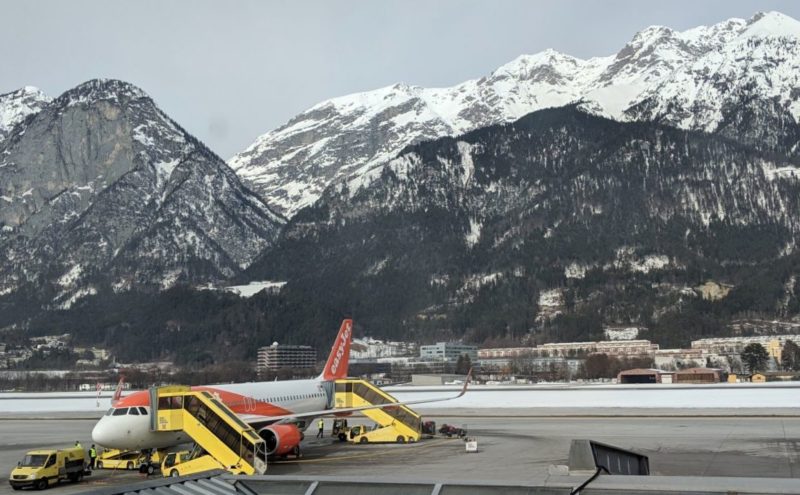
Innsbruck airport, Austria. Image © PlanetSKI
“Government policy has an enormous role to play for sure, but also the market has a role to play in terms of companies taking responsibility which ties in with policy, as measures get taken to reduce or discourage emissions,” said Professor Betts,
“Anyone who’s investing anywhere with long term implications needs to be prepared for the future, which means being prepared for climate change, but also being prepared to move to a low carbon world, decarbonized world, so not relying on fossil fuels.”
Whose responsibility it is to intervene is up for argument.
Mostly everyone agrees that it is up to everyone to mitigate climate change, but the real power lies in government and with anyone who is investing in climate damaging policies and work environments.
Soon it will be in companies’ financial interest to be more sustainable if we are in fact moving towards a low carbon world – it is system level change.
In terms of individuals, Betts encourages people to use their democracy: “Vote for the people that you think are going to take the most effective action, but also go beyond that, write to your MP, to your local councillor, and as a consumer.”
“Make appropriate choices both in terms of what you buy and also the kind of things you do like transport, travelling long distances by train rather than flying if you can.”
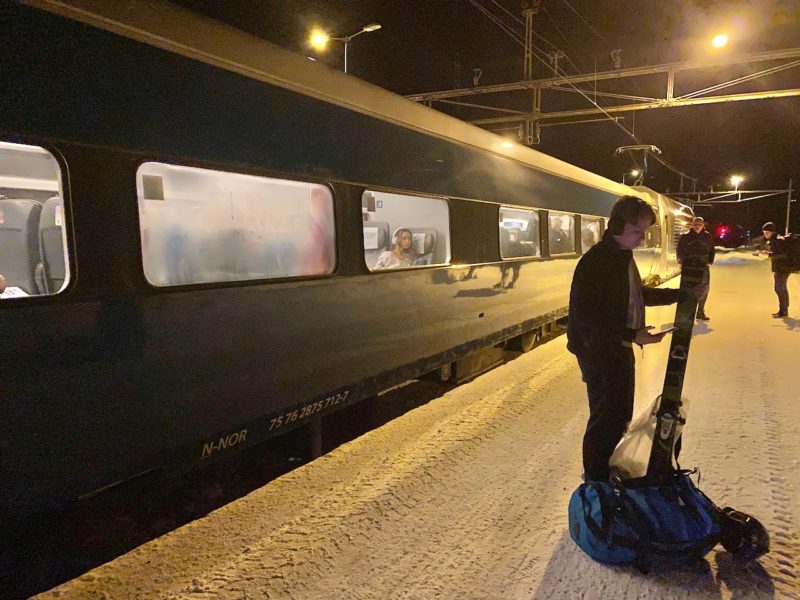
Skiing in Norway. Image © PlanetSKI
In February, 200 top skiers signed a letter to the International Ski and Snowboard Federation (FIS) demanding action on the climate crisis.
It asked to change the ski season to adapt to reduced snow reliability and a more “geographically reasonable” race schedule to reduce carbon emissions, rather than flying around the world to compete.
Norwegian racer Aleksander Aamodt Kilde said, “we see that the world is changing. We see also the impact of our sport … I want the future generations to experience winter and to be able to do what I do.”
In the letter the US downhill skier and Protect our Winters (POW) ambassador, Travis Ganong said, “we really want to push our organising body to be leaders in this fight for climate change and currently I don’t think we are leading.
“I don’t know if it’s the schedule or what [the FIS] can change, but at least start looking deep into what we’re currently doing and how we can do it better.”
We are not yet past the point of no return, but we are on the brink.
That being said, we need to get on and take action, but also adapt to the changes that are already happening.
Which means ski resorts dealing with a shorter ski season and changing the economy of the local towns.
“I am motivated as opposed to hopeful. Because hope could imply that we think it’s all going to be okay, I think it could be okay if we get our act together,” concluded Professor Betts.
About the author:

Leonora Ellis

PlanetSKI logo

